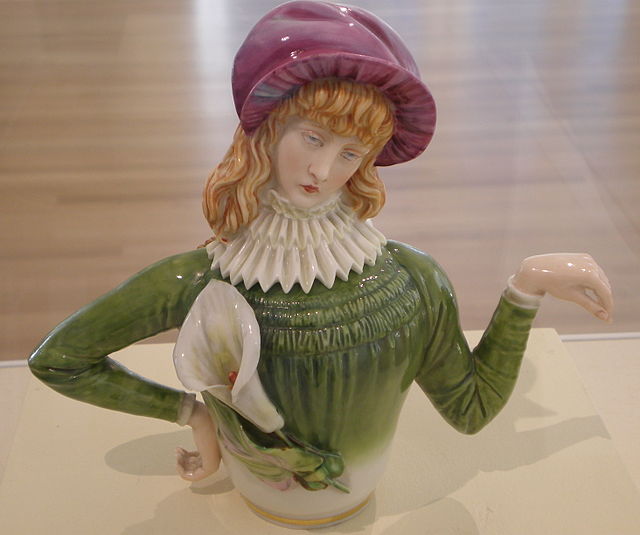Bristol porcelain covers porcelain made in Bristol, England by several companies in the 18th and 19th centuries. The plain term "Bristol porcelain" is most likely to refer to the factory moved from Plymouth in 1770, the second Bristol factory. The product of the earliest factory is usually called Lund's Bristol ware and was made from about 1750 until 1752, when the operation was merged with Worcester porcelain; this was soft-paste porcelain.
Mug, c. 1748–1752, Lund's Bristol factory, soft-paste porcelain with overglaze enamels.
Cup and saucer, 1774, from the Champion period. The Latin inscription reads: "R. and J. Champion gave this as a token of friendship to J. Burke the best of British wives, on the third day of November, 1774". This was Jane, Mrs Edmund Burke; Champion was a friend, who helped Burke's election that year as a Bristol MP.
Garniture of three vases, c. 1773, painted by Michel Socquet
Boy frightened by a Dog, c. 1772–1775
Royal Worcester is a porcelain brand based in Worcester, England. It was established in 1751 and is believed to be the oldest or second oldest remaining English porcelain brand still in existence today, although this is disputed by Royal Crown Derby, which claims 1750 as its year of establishment. Part of the Portmeirion Group since 2009, Royal Worcester remains in the luxury tableware and giftware market, although production in Worcester itself has ended.
Tea canister, about 1768, Worcester porcelain factory V&A Museum no. 1448&A-1853.
Soft-paste armorial porcelain plate with the coat of arms of the Duke of Clarence, future William IV, 1789, Flight factory, Diameter: 9.7 inches
Female side of Aesthetic teapot designed by R. W. Binns and modeled by James Hadley, 1881.
Pair of "japonist" vases, 1873 (Indianapolis Museum of Art)








